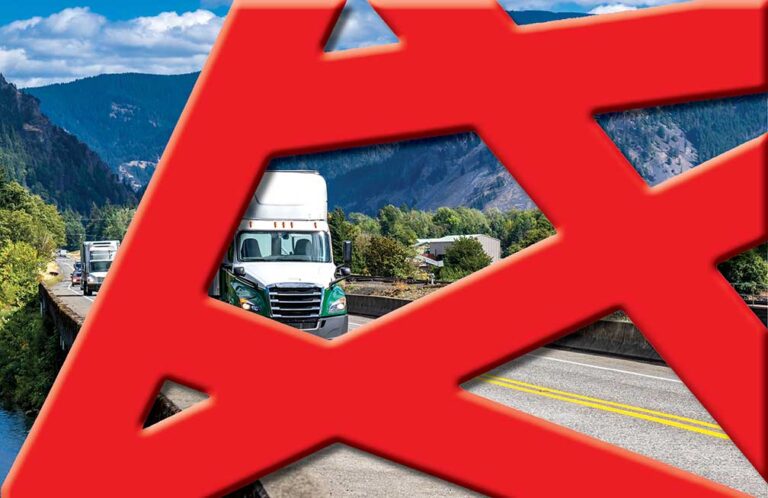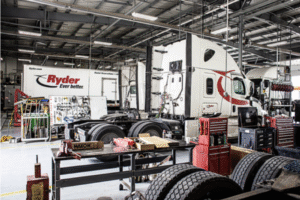Most professional drivers would agree that the trucking industry is subject to too many rules and regulations.
While many mandates are designed to improve safety for all highway users, some are outdated — and other regulations incur more cost and effort than they deliver in safety benefits.
That’s why U.S. Transportation Secretary Sean P. Duffy announced changes to more than 50 “burdensome” regulations from agencies under his control in May.
Of the targeted regulations, 20 were issued by the Federal Motor Carrier Safety Administration (FMCSA) and apply directly to trucking. Some are simply regulation clean-up — like the rule regarding a civil penalty schedule for drug and alcohol testing that was added waaaaay back when the Interstate Commerce Commission (the predecessor of the FMCSA) was still in existence.
Other rules, however, were deemed to be cumbersome without any positive impact on safety.
One example of this is the requirement that rear-impact guards on trailers have a certification label from the manufacturer. When confronted with the question of what happens when the certification label is damaged, faded or falls off — and the trailer manufacturer isn’t willing to issue a new certification for a trailer they sold a decade ago, the FMCSA response was to say the penalties wouldn’t be enforced.
This, of course, leads to the question: Why is a regulation necessary in the first place if there are no plans to enforce it? That question will go unanswered as the regulation will be axed if the proposed rulemaking is approved.
Outdated regulations
Another regulation on the chopping block is the requirement that trailers manufactured before Dec. 1, 1993, be retrofitted with retroreflective conspicuity markings. The number of trailers left on the road manufactured before that date (more than three decades ago) is minimal, making the original rule obsolete.
The rule that commercial motor vehicles (CMVs) must carry a spare fuse for each type and size of fuse needed by the vehicle has also become pretty much obsolete, as relays and circuit breakers have replaced fuses in many applications.
Another obsolete regulation that remains on the books regards liquid-burning flares. Most CMV drivers today carry reflective triangles rather than ANY sort of flares, especially if they haul hazardous materials. Liquid-burning flares are a relic from the distant past, when “smudge pots” were still used to mark highway construction zones.
Violation and inspection reports
One requirement that impacts every driver is the regulation requiring drivers to self-report motor vehicle driving violations to their state of domicile.
When the CDL (commercial driver’s license) was implemented in the early 90’s, drivers were prohibited from possessing licenses in more than one state. Tickets received in other states, however, often took months or years to filter back to the home state — IF they ever got there at all.
The self-reporting requirement directed drivers to personally notify the appropriate authorities in their home state of any violations, a requirement that was nearly universally ignored. Since the FMCSA required states to use the computerized electronic exchange of violations in 2024, self-reporting is no longer necessary.
A regulation in the same category is the requirement that motor carriers sign and return a completed inspection report to the issuing state. Some states don’t require or ask for the return at all. An amendment would clarify that the reports only be returned to states that require them, using a method specified by that state, such as electronic transmission.
Other regulations facing ‘retirement’
Paper copy of ELD operator’s manual
Another requirement that many drivers are familiar with is the regulation mandating that an operator’s manual for the electronic logging device (ELD) be carried in the vehicle. Most ELDs are programmed with an electronic version of the manual, and drivers are required to understand the operation of the ELD they are using. Additionally, ELD vendors must self-certify their products with the FMCSA, who approves their use. Carrying a printed manual in the cab is considered an unnecessary burden for carriers and drivers.
Hazardous loads must stop at railroad crossings
One change some drivers will be glad to see is the proposed revision to the rule requiring drivers pulling hazardous materials loads or hauling passengers to stop at railroad grade crossings before proceeding.
Currently, the rule makes an exception if the crossing is controlled by a functioning traffic light. The revised change would add a similar exception for crossings that are controlled by an active warning device, such as flashing lights, bells or a lowered arm. Under the proposal, IF the warning devices are not activated and the driver can exercise due caution by looking both ways, making sure no train is coming, the requirement to stop will be waived.
Drivers will still be required to stop at unmarked crossings or those marked only with the “crossbuck” RR sign.
Some drivers had questioned the safety aspect of stopping a fully loaded, heavy vehicle before crossing railroad tracks and then proceeding across at “walking speed” in a low gear. Shifting gears on the tracks is prohibited, and a train could arrive before the slow-moving vehicle cleared the tracks. The proposed revision would allow drivers to proceed without stopping IF no warnings are activated.
‘Medical treatment’ terminology
A proposed change would modify the use of the term “medical treatment” for the purpose of accident reporting.
Currently, the regulation mentions “medical treatment away from the accident scene.” Widely interpreted to refer to a trip in an ambulance, such treatment raises the category of an accident to “reportable” — one that must be made part of a carrier’s record and also has implications on whether a driver must undergo post-accident testing for controlled substances.
However, that ambulance trip could be simply precautionary, with no treatment received at the hospital beyond what could have been administered at the scene.
Further, accident victims who refuse ambulance transport can go to the hospital later as symptoms or concerns arise, an event that isn’t listed on the accident report. Revised guidance could help rectify these situations.
While some proposed changes don’t impact safety and can be made immediately by FMCSA, most will need to undergo the usual process of a proposed rulemaking and public comment period before implementation. The FMCSA will announce each in the Federal Register.
Cliff Abbott is an experienced commercial vehicle driver and owner-operator who still holds a CDL in his home state of Alabama. In nearly 40 years in trucking, he’s been an instructor and trainer and has managed safety and recruiting operations for several carriers. Having never lost his love of the road, Cliff has written a book and hundreds of songs and has been writing for The Trucker for more than a decade.















